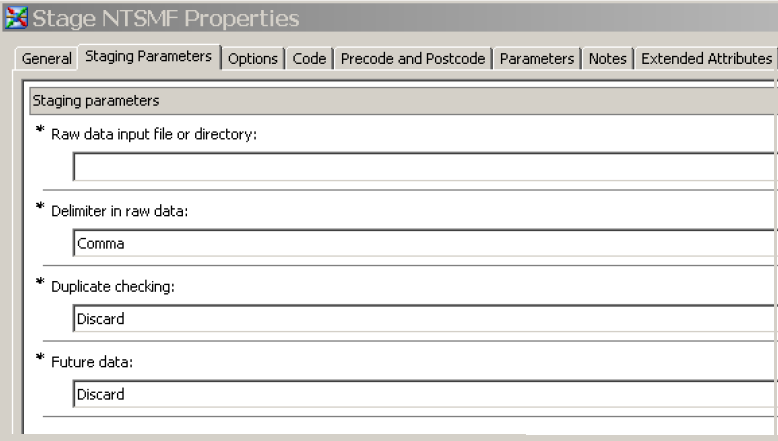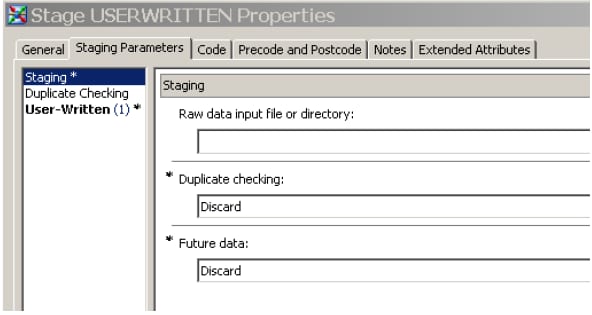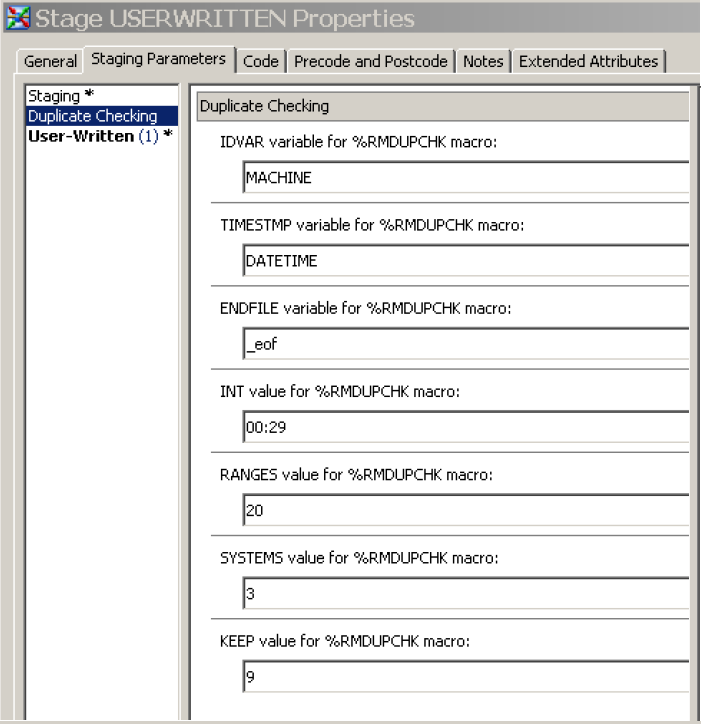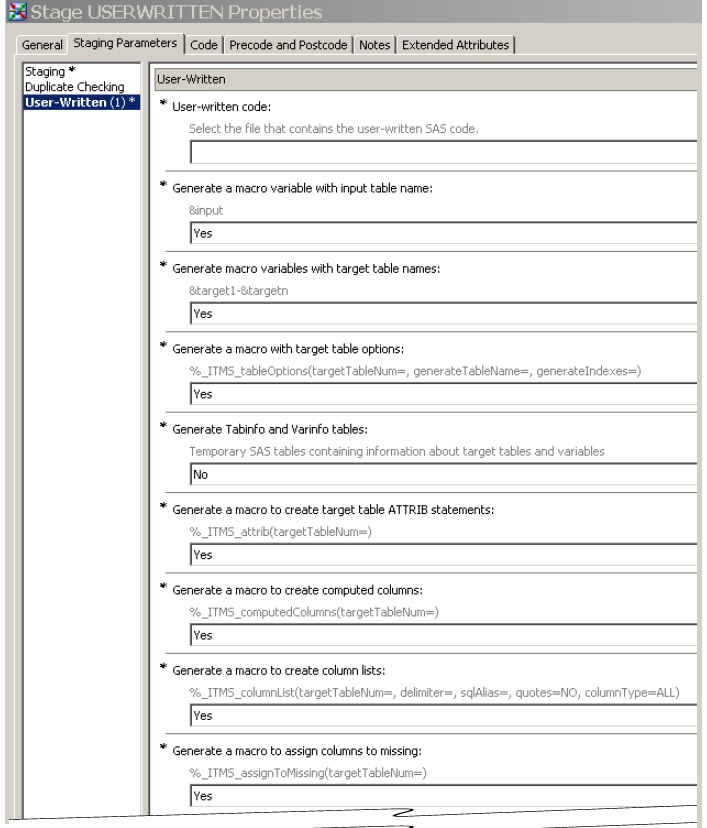Subsequent Tasks
Overview of Subsequent Tasks
Update ITRM Properties of Staging Transformations
If the SAS IT Resource
Management 2.6 or 2.7 tables that are being migrated are supported
by a SAS IT Resource Management 3.21 adapter, then the staging job
that is created for each supported adapter includes a staging transformation.
Open the Properties dialog box for the transformation
and click the Staging Parameters tab. On
this tab, specify the adapter-specific attributes such as data duplication
checking options and the location of the raw data. These options vary,
depending on the specific adapter.
Fill in SAS Code for User-Written Transformations
Some SAS IT Resource
Management 2.6 and 2.7 collectors, such as SiteScope, do not have
a corresponding SAS IT Resource Management 3.21 adapter. In this situation,
do not attempt to migrate the unsupported data source to SAS IT Resource
Management 3.21. For best results, continue to run the unsupported
collector in SAS IT Resource Management 2.6 or 2.7 until a version
of SAS IT Resource Management is available that supports that data
source. Future releases of SAS IT Resource Management might include
support for legacy SAS IT Resource Management 2.6 and 2.7 collectors.
If migration is performed
for unsupported data sources, a single staging job (and set of folders)
is created for them.
Note: If you have multiple generic
collectors in your PDB, then only a single staging job is created
for all of the generic collectors. You can split this staging job
into separate jobs because not all the staging tables are from the
same generic collector or the same staging code.
The staging job for
the unsupported data sources contains a User-Written staging transformation.
Right-click this transformation in the process flow diagram and select Properties. Three types of properties need to be specified:
Staging parameters, Duplicate Checking parameters, and User-Written
parameters.
As shown in the following
display, the Staging panel of the Staging Parameters tab enables the user to update the Raw data input file or directory field, if it is used
by the staging code.
As shown in the following
display, the Duplicate Checking panel enables
the user to specify parameters for the %RMDUPCHK macro to use with
the user-written staging code.
Review Computed Columns
As part of the migration
process, computed columns are created to provide similar functionality
for the SAS IT Resource Management 2.6 or 2.7 derived variables and
formulas. Derived variables result in computed columns in the staging
tables. Formula variables result in computed columns in the appropriate
simple and summarized aggregations.
Review the source code
for each computed column to ensure that the column functions correctly
in this new context. Here are some examples of problems that can occur
with the migrated source code:
-
referencing other statistics where the referenced statistics were of interpretation type COUNT, TIME, or TIMETICKS. These statistics might now be weighted-rate statistics. Therefore, a different variable name should be used. For more information, see Data Handling Differences between SAS IT Resource Management 2.6 or 2.7 and 3.21.
Review the Migration Status Report to Discover Missing Formats
The migration process
verifies that any associated SAS formats can be located. A list of
missing formats is displayed as part of the migration status report,
as well as in the SAS log. Missing formats do not cause migration
or the generated jobs to fail. However, missing formats might yield
unexpected results in reporting. In addition, any formats that are
used by computed column or formula code need to be in the format search
path. Migration does not verify source code for computed columns.
SAPR3 Considerations
The SAPTSK and SAPMTS
aggregation jobs for the SAPR3 adapter used a macro variable called
CPRPVARS. To compensate for this macro variable not being present,
add a %GLOBAL statement as part of the pre-code for the SAPTSK and
SAPMTS aggregation jobs. The following display shows the %GLOBAL statement
added to the Precode and Postcode tab of
the SAPTSK Properties dialog box.
Process Exit Considerations
SAS IT Resource Management
2.6 and 2.7 permitted the use of process exits. In SAS IT Resource
Management 3.21, the architecture has changed so that process exits
are no longer supported. In some cases, the same functionality is
possible by means of attributes for the transformations, tables, or
columns (including computed columns). For exit processing that cannot
be accomplished by means of these mechanisms, alter the process flow
diagram to include your own transformations to accomplish the same
work as the process exits.
Deploy and Schedule Jobs for Execution
After all job customization
is complete, you can deploy the job to the server and schedule it
for execution. Although the jobs that are generated by %RMPDB2DM can
be run interactively from the SAS IT Resource Management client, it
is more efficient to run them in batch mode. For more information
about generating, deploying, and scheduling jobs for execution, see
the SAS IT Resource Management Help and Chapter 12, “Jobs”
in the SAS IT Resource Management 3.21: Administrator’s
Guide.





